Zaha Hadid was a British-Iraqi architect who was born in Baghdad in 1950 and passed away in 2016. She studied mathematics at the American University of Beirut before pursuing architecture at the Architectural Association in London. Hadid started her own practice in London in 1980, and became known for her unconventional designs that pushed the boundaries of modern architecture.

Throughout her career, Hadid designed a number of iconic buildings around the world, including the Heydar Aliyev Center in Baku, Azerbaijan; the MAXXI museum in Rome, Italy; and the Guangzhou Opera House in China. She also worked on several large-scale urban projects, such as the London Aquatics Centre for the 2012 Olympic Games.

Hadid’s architectural style was characterized by its fluidity and dynamism, with buildings that seemed to defy gravity and challenge traditional notions of space and form. She was the first woman to win the Pritzker Architecture Prize, which is considered the highest honor in the field of architecture. Hadid was also awarded the Stirling Prize twice, and was made a Dame Commander of the Order of the British Empire for her services to architecture.
Overall, Zaha Hadid is widely regarded as one of the most important and influential architects of the 21st century, and her work has had a profound impact on the field of architecture and design. She was a trailblazer for women in a male-dominated profession, and her innovative designs continue to inspire architects and artists around the world.
If you want to know about the staircase design or landscape garden or requirements for disabled persons in a building, please click the link.
1) Early Life and Education
Zaha Hadid was born on October 31, 1950, in Baghdad, Iraq. Her father was a wealthy industrialist, and her mother was an artist. Hadid grew up in a culturally rich environment, with access to art, music, and literature from a young age. She was particularly interested in mathematics and science, and excelled in these subjects in school.
In 1968, Hadid moved to London to attend the Architectural Association School of Architecture. She initially struggled with the more traditional approach to architecture that was taught at the school, but soon found her own unique style and voice. During her time at the Architectural Association, Hadid was exposed to the avant-garde architectural movements of the time, such as the High-Tech and Deconstructivist movements. She was particularly influenced by the work of architects such as Le Corbusier, Buckminster Fuller, and Cedric Price.
After graduating from the Architectural Association in 1977, Hadid worked briefly for the Office of Metropolitan Architecture in Rotterdam, the Netherlands, before returning to London to establish her own practice in 1980. At the time, her work was considered highly experimental and controversial, and she struggled to gain recognition and commissions for her designs.
Hadid continued to teach and lecture on architecture throughout her career, and held positions at a number of prestigious institutions, including the Harvard Graduate School of Design, the University of Illinois at Chicago, and the Vienna University of Technology. She also served as a trustee of the Museum of Modern Art in New York and as a member of the Royal Institute of British Architects’ Council.
Overall, Zaha Hadid’s upbringing and education played a significant role in shaping her unique perspective and approach to architecture. Her early exposure to diverse cultural and artistic influences, as well as her training in mathematics and science, helped to lay the foundation for her groundbreaking designs and innovative approach to architecture.
2) Architectural Style and Approach
Zaha Hadid was known for her unique architectural style, which was characterized by fluid forms, organic shapes, and dynamic, sweeping curves. She often used advanced computer modeling and 3D printing techniques to create her designs, which allowed her to create complex, asymmetrical shapes that were previously impossible to achieve.
Hadid’s design philosophy was grounded in the belief that architecture should be a transformative and immersive experience, one that blurs the boundaries between inside and outside, public and private, and past and future. Her buildings often incorporated elements of the surrounding environment, such as the flow of water, the movement of people, or the contours of the landscape, in order to create a sense of continuity and connection with the natural world.
Some of Zaha Hadid’s most famous works include:
Heydar Aliyev Center in Baku, Azerbaijan
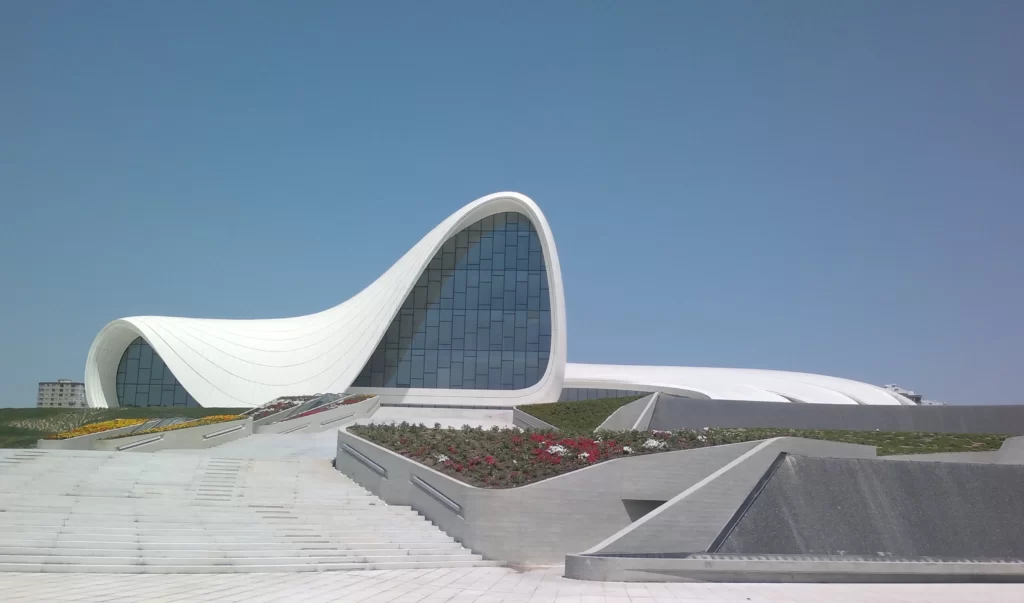
This cultural center features a flowing, white facade that wraps around the building like a ribbon, creating a dynamic and fluid form that appears to defy gravity.
MAXXI museum in Rome, Italy
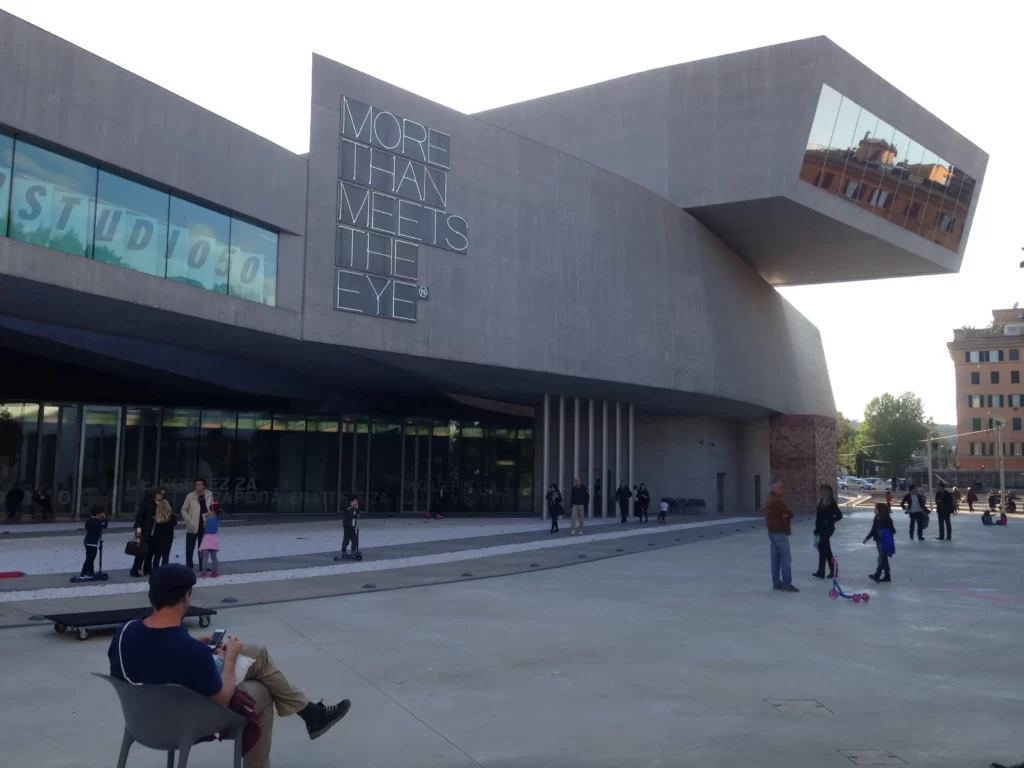
The National Museum of 21st Century Arts, designed by Hadid, is a bold, futuristic structure with angular forms and sweeping curves that evoke the dynamism of the contemporary art inside.
Guangzhou Opera House in China
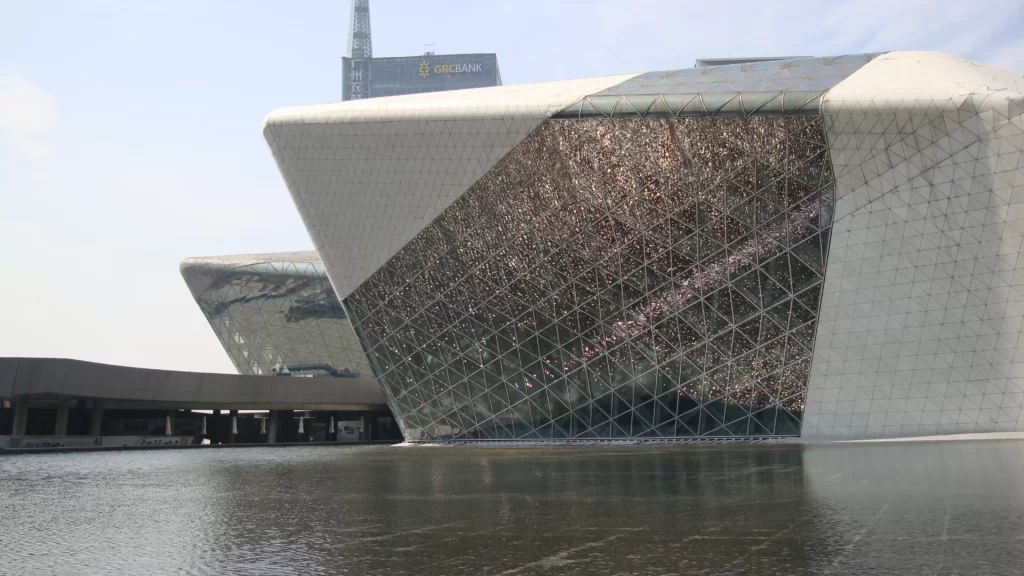
This stunning opera house features a dramatic, sculptural form that blends seamlessly into the surrounding landscape, with a series of undulating curves that reflect the movement of water.
London Aquatics Centre for the 2012 Olympic Games
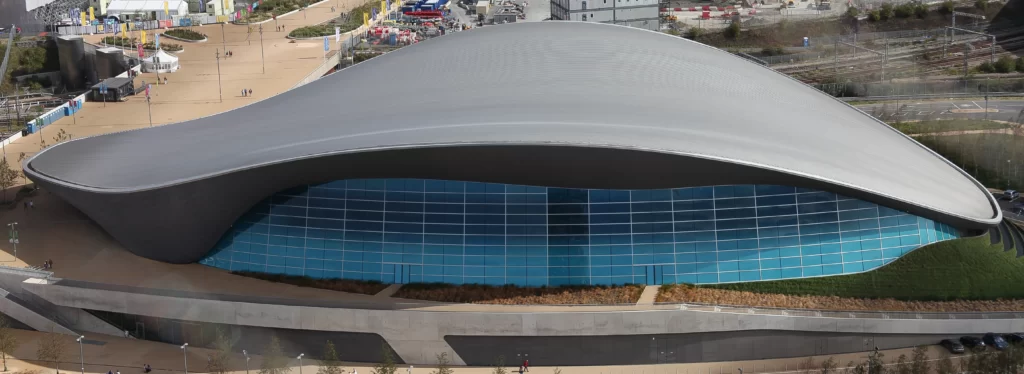
Hadid’s design for the aquatics center features a striking, wave-like roof that appears to float above the building, creating a sense of weightlessness and fluidity.
Vitra Fire Station in Germany
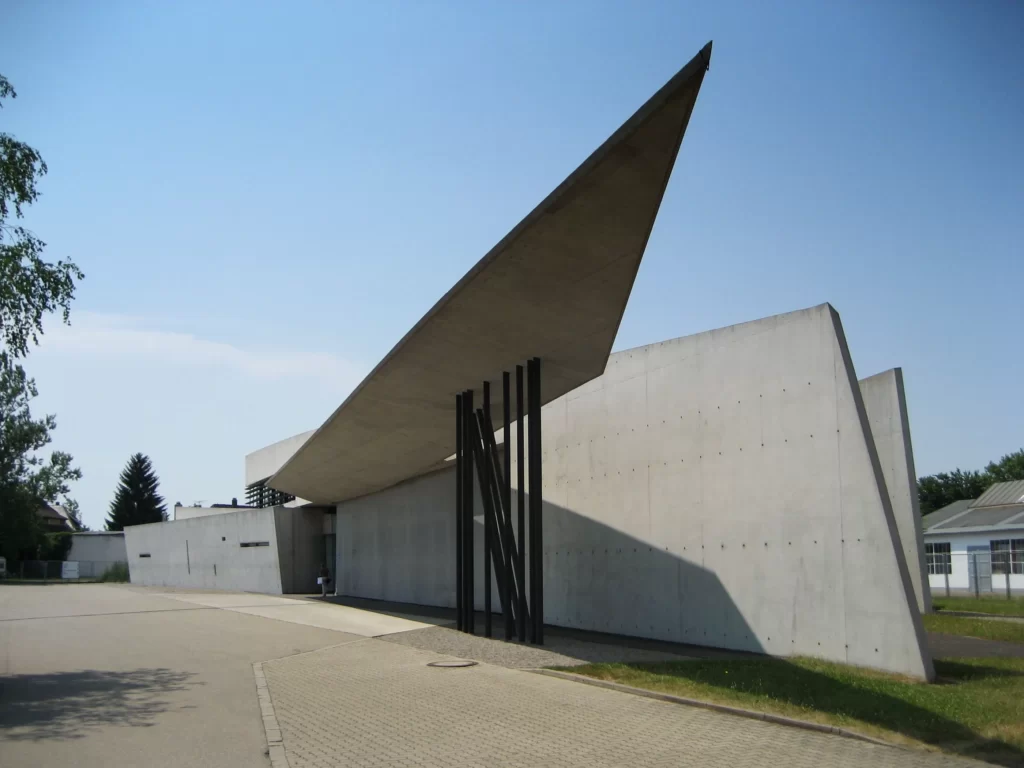
This early project by Hadid features an angular, sculptural form that reflects the energy and movement of the firefighters who work there, while also incorporating elements of the surrounding industrial landscape.
Overall, Zaha Hadid’s unique approach to architecture, with its fluid forms and innovative use of technology, has had a profound impact on the field of architecture and design, and continues to inspire architects and artists around the world.
Wangjing SOHO in Beijing, China

This commercial complex features three towers with fluid and curvilinear shapes that seem to be in constant motion. The complex also incorporates a series of public spaces and pedestrian walkways, creating a vibrant and lively urban environment.
Qatar National Convention Centre in Doha, Qatar
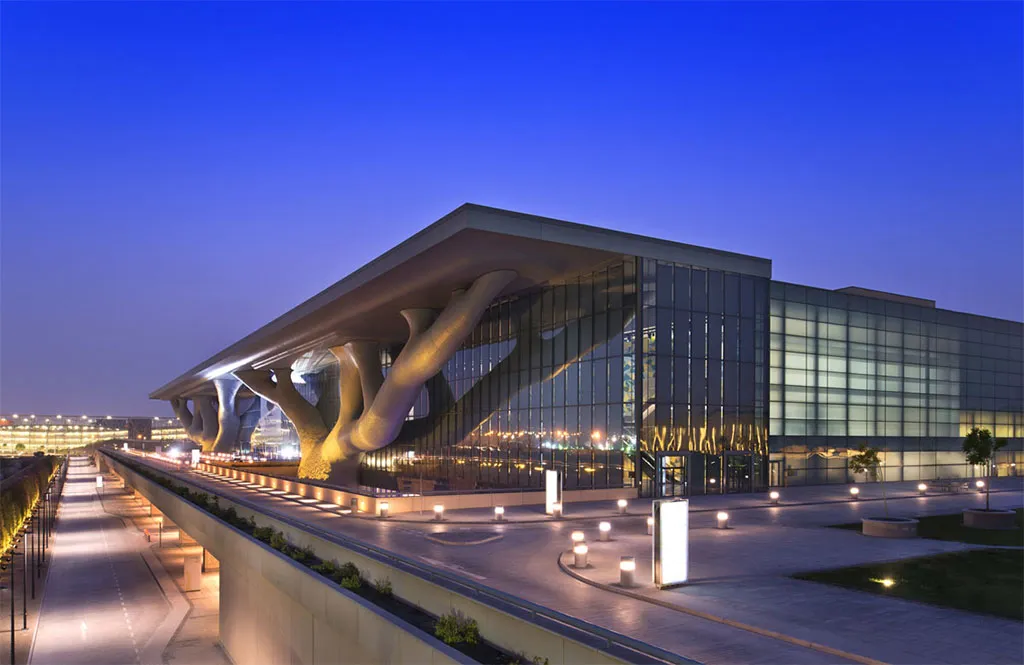
The convention center is designed to resemble the desert rose, a natural formation found in the region. The building’s sweeping curves and undulating forms are inspired by the sand dunes of the Qatari desert, and create a sense of fluidity and movement.
Riverside Museum in Glasgow, Scotland
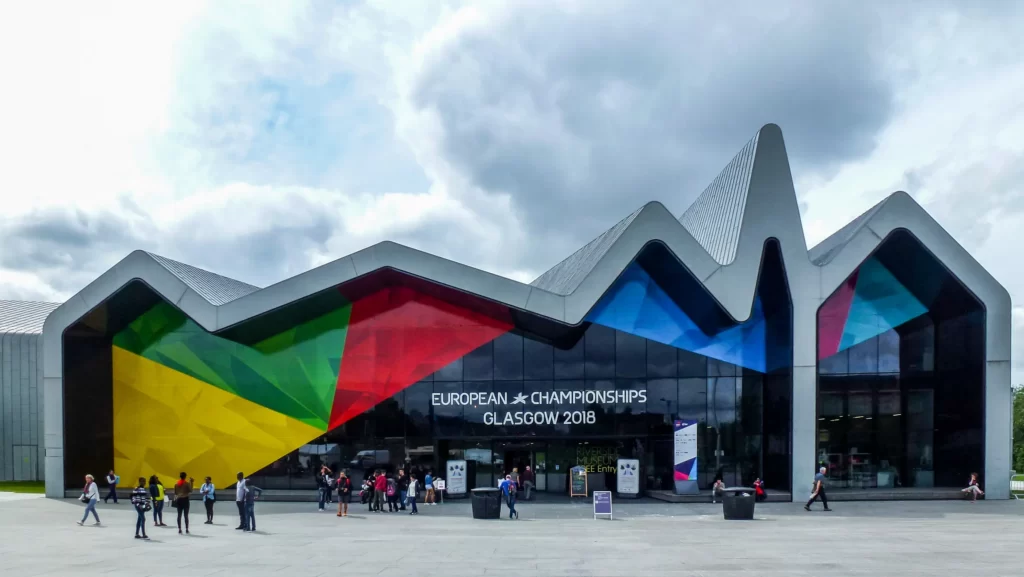
The museum features a distinctive, zigzagging roof that echoes the course of the River Clyde, upon which the museum is located. The roof is also designed to provide natural light and ventilation, reducing the building’s energy consumption.
Salerno Maritime Terminal in Salerno, Italy
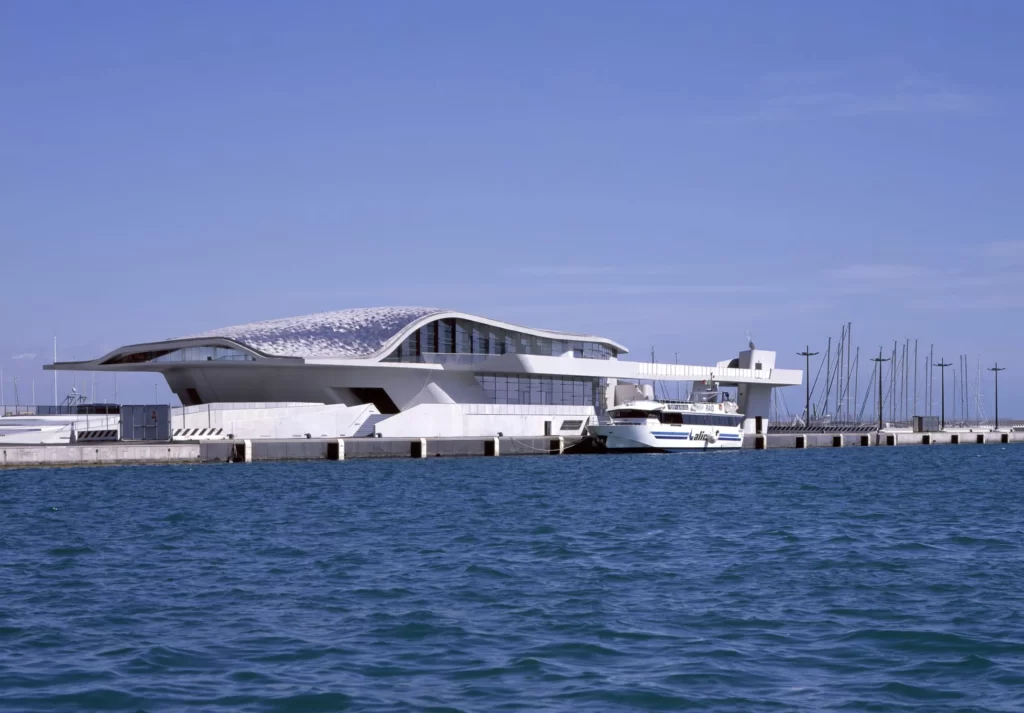
Hadid’s design for the terminal features a series of curved and interconnected forms that recall the movement of the sea. The terminal also includes a public square and park, creating a new social hub for the city.
- Zaha Hadid’s legacy as an architect and designer extends far beyond her buildings and projects. She was a trailblazer and a visionary, whose work challenged conventional notions of what architecture could be and how it could interact with the world around it. Hadid’s approach to architecture, with its emphasis on fluidity, innovation, and transformation, continues to inspire new generations of architects and designers around the world.
3) Awards and Achievements
Throughout her career, Zaha Hadid received numerous awards and recognitions for her contributions to the field of architecture and the broader art world. Some of the most notable awards she received include:
- Pritzker Architecture Prize (2004): Hadid became the first woman to receive this prestigious award, which is often referred to as the “Nobel Prize of architecture.” The award recognized her innovative approach to design and her significant contributions to the field.
- Stirling Prize (2010, 2011): Hadid won the Stirling Prize, the UK’s most prestigious architecture award, twice, for the MAXXI Museum of 21st Century Arts in Rome and the Evelyn Grace Academy in London.
- Royal Institute of British Architects (RIBA) Gold Medal (2015): Hadid was the first woman to be awarded the RIBA Gold Medal, which recognizes a lifetime of achievement in architecture.
- AIA Gold Medal (2016): Hadid was awarded the American Institute of Architects (AIA) Gold Medal, becoming the first woman to receive this honor.
- Praemium Imperiale (2016): Hadid was awarded the Praemium Imperiale, a global arts prize awarded annually by the Japan Art Association.
Hadid’s impact on the field of architecture and the broader art world was significant. She was known for her innovative approach to design, which combined advanced technology and materials with organic forms and an emphasis on fluidity and movement. Her work challenged traditional notions of architecture and pushed the boundaries of what was possible. Hadid’s designs inspired a new generation of architects and designers, who continue to build on her ideas and push the field of architecture even further.
Hadid’s influence was also felt in the broader art world. She was a passionate advocate for the intersection of art and architecture, and her designs were often exhibited in museums and galleries around the world. She collaborated with artists and designers in a wide range of fields, including fashion, furniture design, and product design, and her work continues to inspire and influence artists and designers across many different disciplines.
In conclusion, Zaha Hadid’s impact on the field of architecture and the broader art world was significant, and her legacy continues to inspire and influence architects, designers, and artists around the world. Her innovative approach to design and her commitment to pushing the boundaries of what is possible have left an indelible mark on the world of architecture and beyond.
4) Legacy and Influence
Zaha Hadid’s lasting impact on architecture and design is evident in the many ways in which her work has influenced and inspired other architects and artists. Her innovative approach to form, space, and technology has set new standards in the field of architecture, pushing the boundaries of what is possible and challenging traditional notions of design.
One of the key ways in which Hadid’s work has influenced other architects and artists is through her use of advanced computer modeling and 3D printing techniques. Her ability to create complex, asymmetrical forms that were previously impossible to achieve has inspired many other designers to explore new approaches to form and structure, using technology as a tool for innovation and creativity.
Another way in which Hadid’s work has had an impact is through her emphasis on fluidity and movement. Her buildings often appear to be in constant motion, with dynamic curves and flowing forms that evoke a sense of energy and vitality. This emphasis on fluidity and movement has influenced other architects to explore new ways of integrating the natural environment into their designs, creating buildings that respond to and interact with their surroundings.
Finally, Hadid’s legacy can be seen in the way that her work has inspired a new generation of architects and designers, who are building on her ideas and pushing the boundaries of architecture even further. Her influence can be seen in the work of designers around the world, from the soaring skyscrapers of Asia to the innovative cultural centers of Europe and the Americas.
Overall, Zaha Hadid’s impact on architecture and design is a testament to her visionary approach and her commitment to innovation and creativity. Her legacy continues to inspire and influence architects and designers around the world, shaping the built environment in new and exciting ways.
5) Conclusion
Zaha Hadid was a pioneering architect and designer who made significant contributions to the field of architecture. Born in Iraq in 1950, she studied mathematics at university before pursuing a career in architecture. Hadid’s unique approach to design, which combined organic forms, advanced computer modeling techniques, and an emphasis on fluidity and movement, set new standards in the field of architecture and pushed the boundaries of what was possible.
Over the course of her career, Hadid designed many iconic buildings and structures around the world, including the Guangzhou Opera House in China, the Heydar Aliyev Center in Azerbaijan, and the London Olympic Aquatics Center. Her work was characterized by its innovative use of technology and materials, its commitment to sustainability and energy efficiency, and its emphasis on creating buildings that responded to and interacted with their natural surroundings.
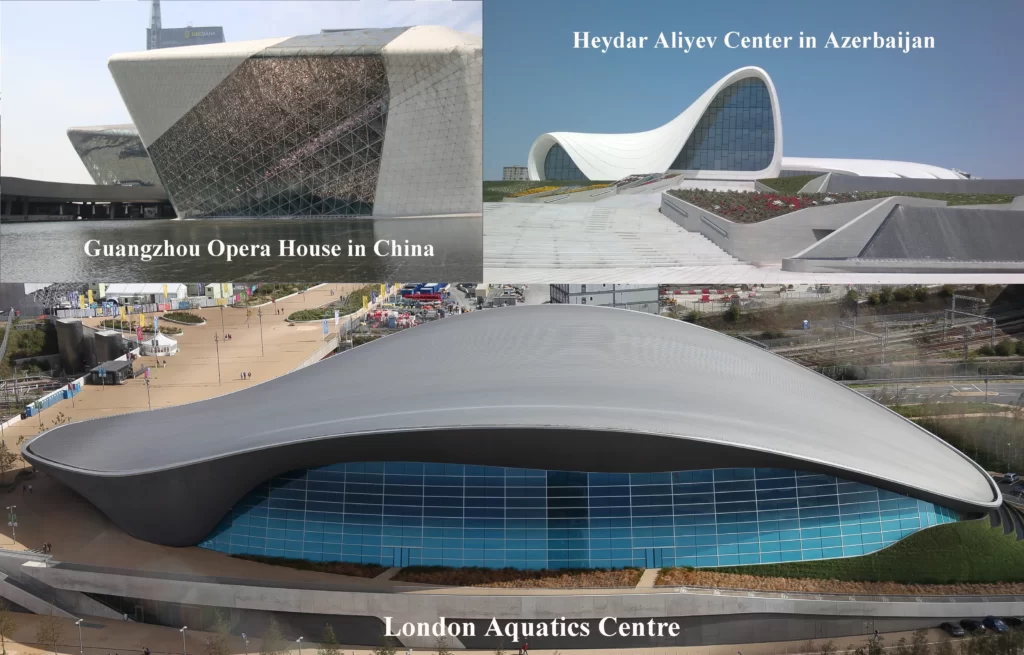
Today, Hadid’s work remains relevant and important, not only for its architectural significance but also for its broader cultural impact. Her designs have inspired a new generation of architects and designers, who are building on her ideas and pushing the boundaries of architecture even further. Her legacy is a testament to her visionary approach and her commitment to innovation and creativity, and her influence can be seen in the work of designers around the world.
In conclusion, Zaha Hadid’s life, career, and contributions to the field of architecture are a testament to her groundbreaking vision and her commitment to pushing the boundaries of what is possible. Her work remains relevant and important today, inspiring a new generation of architects and designers to explore new approaches to form, structure, and technology, and to create buildings that respond to and interact with their natural surroundings.
Hi